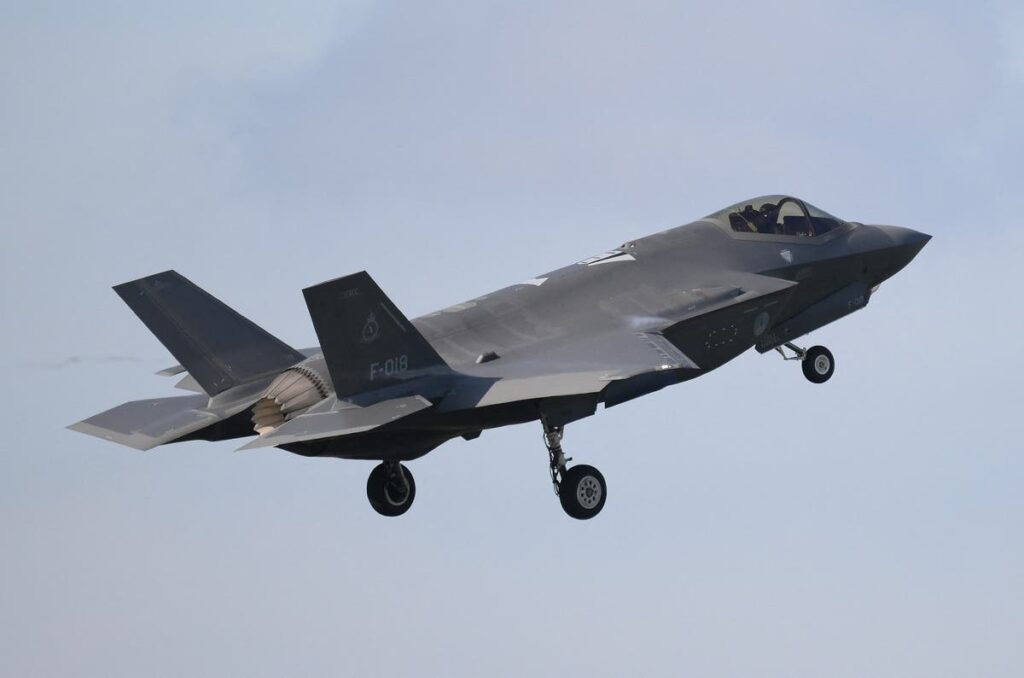Poland scrambled fighter jets to defend its airspace overnight as Ukrainian authorities said five people had been killed in extensive Russian drone and missile attacks across the country.
Why It Matters
Russia’s aerial bombardment, particularly on sites close to NATO territory to the west of Ukraine, have frequently pushed the alliance to protect its airspace with fighter jets. Member nations are collectively obliged to respond to attacks on other alliance nations under Article 5 of the founding treaty.
Moscow’s drones and missiles entering NATO airspace have not been treated as attacks on the alliance so far, although roughly 20 drones crossed into Poland last month in what Prime Minister, Donald Tusk, said was a deliberate incident. Russia denied intentionally targeting the country.
What To Know
Poland’s military said in a statement early on Sunday that it had scrambled fighter jets and put its ground-based air defenses and radar systems on “the highest state” of alert after Russia struck sites across Ukraine overnight. Warsaw said in a later update it had not detected any violations of its airspace and its armed forces were back to operating as usual.
Dutch F-35 stealth fighter jets were also involved, Poland said. The Netherlands is currently carrying out a rotation of NATO’s air policing in Poland, and other members contributed aircraft to the alliance country on Ukraine’s border last month.
Moscow fired over 50 missiles and 500 drones across Ukraine, killing “at least 5 people and injuring a dozen more,” Kyiv’s foreign minister, Andrii Sybiha, said in a post to social media on Sunday. An “entirely family of four,” including a teenage girl, were killed at their home close to the western city of Lviv, Sybiha said. Another person was killed in the southern Zaporizhzhia region, officials said.
Ukrainian President Volodymyr Zelensky said Russia had targeted the country’s critical infrastructure in nine different regions, including Lviv.
Russia’s Defense Ministry said it had launched a “massive strike” using long-range weapons, including hypersonic Kinzhal missiles, on Ukraine’s gas and energy sites, as well as military industry facilities.
Lviv is typically considered one of the safest cities in Ukraine, far west of the eastern front lines where the fiercest of the fighting has raged for more than three and a half years of full-scale war.
Efforts from the White House to secure a peace deal in Ukraine have moved at a glacial pace. President Donald Trump has become increasingly irritated with a Russia he still appears to have been reluctant to strong-arm into an agreement. An in-person summit between the Republican and Russian President Vladimir Putin in Alaska in August failed to yield a deal, and Trump branded Russia a “paper tiger”—to which the Kremlin responded it instead was a “real bear.”
Vice President JD Vance suggested last month the U.S. could consent to Ukraine’s request for long-range American Tomahawk missiles, which would add significantly to Kyiv’s ability to strike deep into Russia. The weapons have a range of roughly 1,550 miles.
It would “lead to the destruction” of U.S. relations with Russia, Putin said in comments published on Russian state media over the weekend. The Kremlin leader said earlier this week that the U.S. providing of Tomahawks to Ukraine would be an escalation of the conflict and would require “direct participation” of American personnel.
What People Are Saying
Ukraine’s foreign minister, Andrii Sybiha, said on Sunday: “To stop this escalation of terror, Russia must face increased trans-Atlantic pressure, particularly on its energy revenues.”
Ukrainian President Volodymyr Zelensky said: “We need more protection and faster implementation of all defense agreements, especially on air defense, to deprive this aerial terror of any meaning.”
Kaja Kallas, the European Union’s top diplomat, said: “Russia is masking its failed summer offensive with terror attacks on Ukrainian civilians and infrastructure.”
Russia’s Defense Ministry said on Sunday: “Last night, the Armed Forces of the Russian Federation launched a massive strike using long-range precision weapons from land, sea, and air bases, including Kinzhal hypersonic aeroballistic missiles, as well as strike drones.”
Read the full article here

